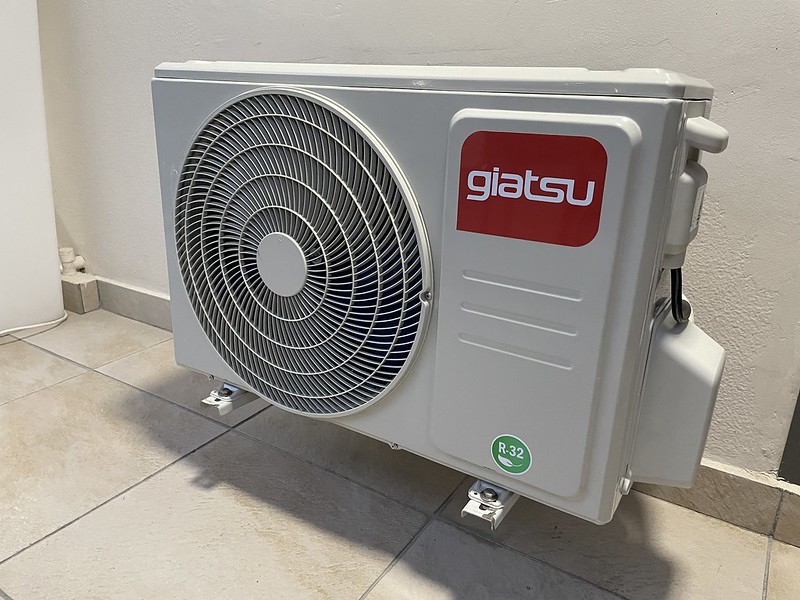Refilling the refrigerant, or gas, in a mini-split air conditioner is a crucial task that ensures the system’s efficient and effective operation. This comprehensive guide will walk you through the step-by-step process of refilling your mini-split’s gas, providing you with the technical details and expert-level insights to ensure a successful DIY project.
Preparation: Vacuum and Leak Check
Before adding any refrigerant to your mini-split system, it’s essential to ensure that the system is properly vacuumed and free of any leaks. This step is crucial to prevent contamination and ensure the system’s long-term performance.
-
Vacuum the System: Use a high-quality vacuum pump to evacuate the system, removing any air and moisture that may have accumulated. Ensure that the vacuum pump is capable of reaching a deep vacuum, typically around 500 microns or lower, to effectively remove any contaminants.
-
Leak Check: Carefully inspect the entire system, including the indoor and outdoor units, as well as the connecting lines, for any signs of leaks. You can use a leak detector or a bubble solution to identify any potential leak points. Addressing any leaks before refilling the system is crucial to prevent future issues.
-
Disconnect the Vacuum Pump: Once the system has been properly vacuumed and checked for leaks, disconnect the vacuum pump and prepare the refrigerant tank for the next step.
Connecting the Refrigerant Tank
Proper connection of the refrigerant tank is essential to ensure a safe and accurate refilling process.
-
Connect the Tank: Connect the refrigerant tank to the yellow service line while the tank is in an upright position. Ensure that the connection is secure and tight to prevent any leaks.
-
Open the Tank Valve: Slowly open the valve on the refrigerant tank to allow the refrigerant to flow into the system.
-
Weigh the Tank: Flip the refrigerant tank upside down and place it on a digital scale. This will allow you to accurately measure the amount of refrigerant being added to the system.
Purging the Air
Purging the air from the service lines is a crucial step to ensure that the refrigerant is properly introduced into the system.
-
Crack Open the Gauge End: Carefully crack open the gauge end of the service line to allow any air trapped in the line to be purged. This will ensure that the refrigerant can flow freely into the system.
-
Close the Gauge End: Once the air has been purged, close the gauge end to create a vacuum on the blue hose and have refrigerant in the yellow hose.
Adding Refrigerant
The actual process of adding refrigerant to the mini-split system requires careful monitoring and control.
-
Open the Blue Valve: Slowly open the blue valve on the gauge set to allow the refrigerant to flow into the system. Keep a close eye on the weight of the refrigerant tank to ensure that the correct amount is added.
-
Monitor the Weight: Continuously monitor the weight of the refrigerant tank to ensure that you add the exact amount of refrigerant specified for your mini-split system. Refer to the system’s specification sheet or installation manual for the recommended refrigerant charge.
-
Close the Blue Valve: Once the correct amount of refrigerant has been added, close the blue valve on the gauge set to stop the flow of refrigerant.
Checking the Pressure
Verifying the system’s pressure is the final step in the refilling process, ensuring that the system is operating within the recommended parameters.
-
Check the Pressure: Use the gauge set to check the system’s pressure. For R410a systems, the typical recommended pressure range is around 118-120 PSI.
-
Adjust as Needed: If the pressure is not within the recommended range, you may need to adjust the amount of refrigerant in the system. Consult the manufacturer’s guidelines for the appropriate pressure range for your specific mini-split model.
Remember, safety should always be your top priority when handling refrigerants. Wear appropriate personal protective equipment (PPE), such as gloves and goggles, and follow all manufacturer and industry safety guidelines. If you’re unsure or uncomfortable performing this task, it’s best to consult a professional HVAC technician.

